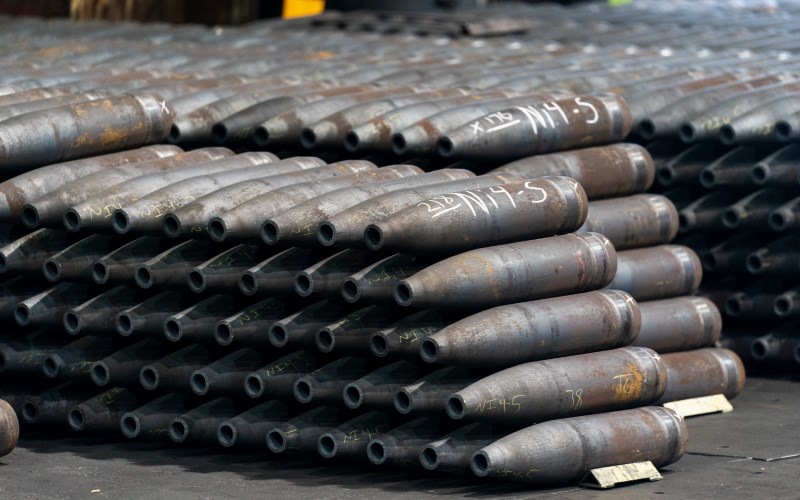 Even though cluster rounds are frowned upon by NATO allies because unexploded bomblets pose a danger to civilians, President Biden said last week he agreed to a recommendation from the Pentagon to send those rounds to Ukraine.
Even though cluster rounds are frowned upon by NATO allies because unexploded bomblets pose a danger to civilians, President Biden said last week he agreed to a recommendation from the Pentagon to send those rounds to Ukraine.
Why? The reason he agreed with the request, Biden told CNN, is because Ukraine is “running out of ammunition” in its war against Russia.
Meanwhile, the U.S. is running low, too, Biden also acknowledged, after sending much of our war stock overseas for the war.
Since the Russia-Ukraine War started 16 months ago, Ukraine is still fighting thanks to NATO members supplying everything from helmets and small-arms ammunition to main battle tanks and infantry fighting vehicles in a proxy war against Russia.
 Among the NATO members, the U.S. is predictably leading all of them in helping Ukraine. Back in January, The New York Times learned the U.S. moved pre-positioned munitions stored in Israel to Ukraine. Those munitions are 155 mm shells.
Among the NATO members, the U.S. is predictably leading all of them in helping Ukraine. Back in January, The New York Times learned the U.S. moved pre-positioned munitions stored in Israel to Ukraine. Those munitions are 155 mm shells.
Similarly, in two separate negotiations, the U.S. and South Korea inked a deal to buy approximately 600,000 155 mm artillery rounds from that U.S. ally after the U.S. sent our shells to Ukraine. The purchase was expected to replenish U.S. stockpiles, according to a Reuters article, but it was unclear how quickly the U.S. would restock the common 155 mm artillery rounds from South Korean manufacturers.
Reacting to Biden’s admission, national security analyst Bob Maginnis tells AFN the Pentagon is acting as if the U.S. won’t face an armed conflict in the near future.
 “And I don't believe that's the case,” he insists. “I think we're heading to war in one way or another, and we're not going to have the arms to defend ourselves.”
“And I don't believe that's the case,” he insists. “I think we're heading to war in one way or another, and we're not going to have the arms to defend ourselves.”
Much like Biden administration is depleting the Strategic Petroleum Reserves, which was created in the 1970s as a security asset in a time of war, U.S. enemies such as China are certainly watching the Pentagon confiscate equipment, vehicles, armor, and ammunition from the military branches.
Back in March, a Dept. of Defense press release boasted the U.S. has sent more than $30 billion of gear to Ukraine said that announcement - now four months ago - was the 33rd time the Biden administration has involved drawdown authority to do so. That aid package in the spring included artillery rounds, bridge-laying equipment, and M1A2 main battle tanks.

Last week, in a Popular Science article, defense manufacturer Raytheon admitted it has asked retirees to return to their old offices to help current employees restart production of the venerable air-defense missile. That surprise request came because Raytheon stopped manufacturing the missiles years ago but the U.S. sent more than 1,700 anti-aircraft systems to Ukraine, the article said, citing a June press release from the Department of Defense.
 If the U.S. gets in a shooting war, Maginnis warns, it will do so without the industrial base that helped the United States fight and win World War II.
If the U.S. gets in a shooting war, Maginnis warns, it will do so without the industrial base that helped the United States fight and win World War II.
“In World War II, better than 90% of all the armaments industry was owned and directed by the U.S. government. Today, virtually none of it is,” he says. “We can't turn our manufacturing and produce the weapons that we're sending over there."







